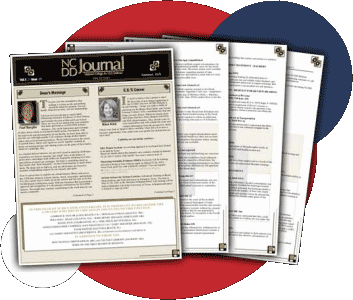- The ABA’s Concise Guide to Lawyer Specialty Certification
- Benefits to Become Board Certified - ABA Video
- Board Certified Members
- How to Become Board Certified in DUI Defense Law
- Apply for Certification
- Apply for Re-Certification Renewal
- Board Certified Senior Specialist
- Rules Governing Board Certification
- Preparing for the Exam
Jury just says
Posted on November 26, 2017 in Uncategorized

The City of East Lansing pulled no punches in trying to convict a man of OWI based on his breath alcohol content. The man was pulled over for making an illegal turn in the middle of a street that was under construction with no traffic around. The officer smelled alcohol and asked him to step from the car after performing a "partial HGN" test on his eyes.
However, once the man stepped from the vehicle – that is when things got interesting. He performed the roadside evidence gathering exercises almost flawlessly including the A-Z; numbers and months of the year. The officer attempted to administer the National Highway Traffic Safety Administration (NHTSA) tests. The jury picked up right away on the failure of the officer to adhere to his training.
The man consented to an evidential breath test from the datamaster. The dmt model had been in place for less than a year at the time of the test. It estimated his breath alcohol content at a .15/.14 in grams /210 Liters. The city prosecutor relied heavily on the breath test because this was a "disconnect" situation where the breath test and the subjective evidence of impairment did not add up.
The prosecutor called Dave Radomski, Vice President of National Patent Analytical Systems, Sgt. Perry Curtis the head of the alcohol enforcement unit of the Michigan State Police and Marv Gier, a Class iv operator, who maintains the instrument. They tried to explain how great this instrument is, how well it works and how a jury would "know" if it was not working properly.
However, the jury was not convinced and was hung – in other words they could not make a decision. The key moments for the citizen-accused were many but one came when Sgt. Curtis testified on cross that if he has 3 beers, blows into it and gets a number then that is not a "fail" by the instrument. Q: "Even if you get a .20?" A: "Even if you get a .20." Q: "Even if you get a .15?" A: "Even if you get a .15." Q: "but you're not going to be a .15 after 3 beers?" A: "No." End of cross.
At closing argument, the best thing for the jury to hear was that they could return any verdict they chose so long as each of them walked away from the courthouse feeling as if it was their conscience that was protected, that the accused could not explain why the datamaster made no sense when compared to the signs of sobriety – but that was the city's job to do. The person in control of breath testing stated under oath that if a person drinks 3 beers then blows into the instrument and a .15 appears – that is not a fail.
Find an Attorney
Enter your city, state, or Zip code below to locate a qualified attorney who has demonstrated a commitment to defend those accused of DUI and related crimes.








